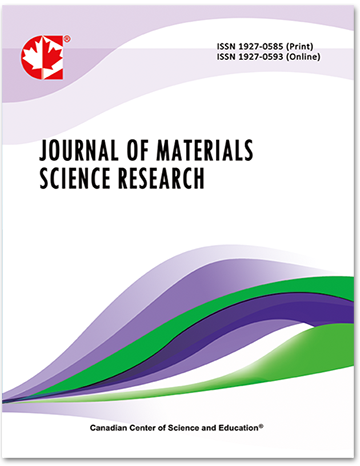Mathematical Modelling of the Interfacial Adhesion of Date Palm/Epoxy
- A. Shalwan
- S. Oraby
- A. Alaskari
Abstract
In recent years, high interests has emerged to use natural fibres as alternative reinforcements synthetic due to its unique benefits regarding renewability, recyclability, degradability, lightweight, and low cost. Recent investigations revealed that the mechanical performance of fibre reinforced polymer composites (FRPCs) is predicated mainly on the interfacial adhesion of fibre with the matrices. In the current work, an empirical approach was exploited to develop mathematical models using linear regression routines available in SPSS IBM program. Such models are established to determine the functional interrelations between, each of the fibres diameters and the percentage of chemical treatment, as independent or response variables, and the interfacial bonding between the DPF and Epoxy resin. Both single fibre tensile testing (SFTT) and single fibre fragmentation testing (SFFT) are considered to study the interfacial adhesion of fibre with matrix and to reflect the real loading conditions. Such testing procedures are carried out for Date Palm Fibres (DPFs) and Date palm fibre reinforced Epoxy composites (DPFEs) with different fibre diameter (0.3-0.7 mm) under different NaOH concentrations (0-9 wt.%). Experimental testing results indicated that the optimum interfacial adhesion and strength of the fibre can be achieved with small fibre diameter when 6 wt. % NaOH concentrations is employed. The use of higher NaOH concentration generally leads to deterioration in the fibre strength. Developed models, on one hand, proved to have the capability to qualitatively and quantitatively grasp the true relationships and, on the other hand, to emphasize the high potential to utilize natural fibres as a replacement of synthetic fibres with affirmation taking into consideration the role of diameter size and chemical treatment of fibres to reach the optimum mechanical behaviour of NFRPCs.
- Full Text:
 PDF
PDF
- DOI:10.5539/jmsr.v5n3p29
Journal Metrics
Impact Factor 2022 (by WJCI): 0.583
Google-based Impact Factor (2021): 0.52
h-index (December 2021): 22
i10-index (December 2021): 74
h5-index (December 2021): N/A
h5-median (December 2021): N/A
Index
- CAS (American Chemical Society)
- CNKI Scholar
- Elektronische Zeitschriftenbibliothek (EZB)
- EuroPub Database
- Excellence in Research for Australia (ERA)
- Google Scholar
- Infotrieve
- JournalTOCs
- LOCKSS
- NewJour
- PKP Open Archives Harvester
- Qualis/CAPES
- SHERPA/RoMEO
- Standard Periodical Directory
- Universe Digital Library
- WJCI Report
- WorldCat
Contact
- John MartinEditorial Assistant
- jmsr@ccsenet.org
